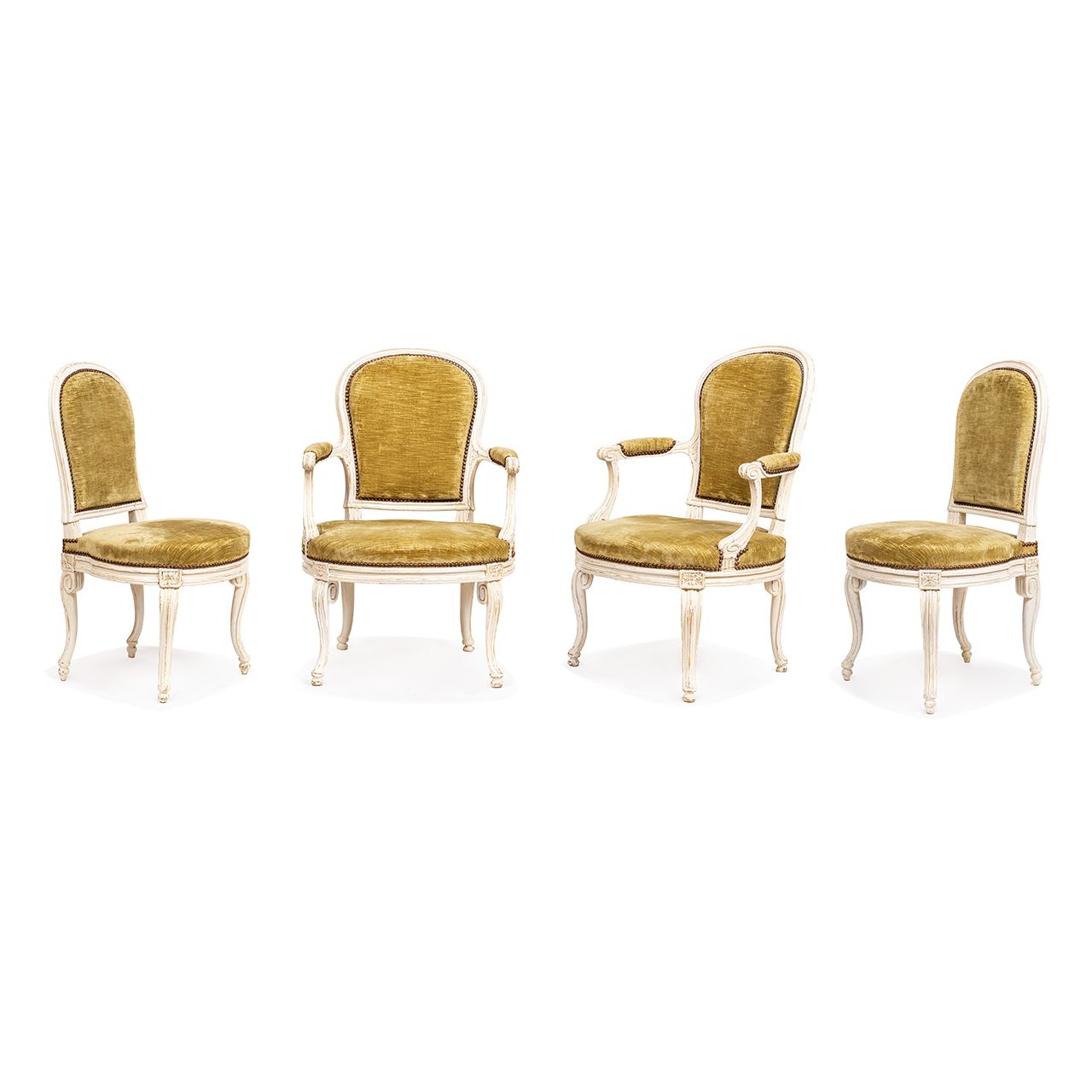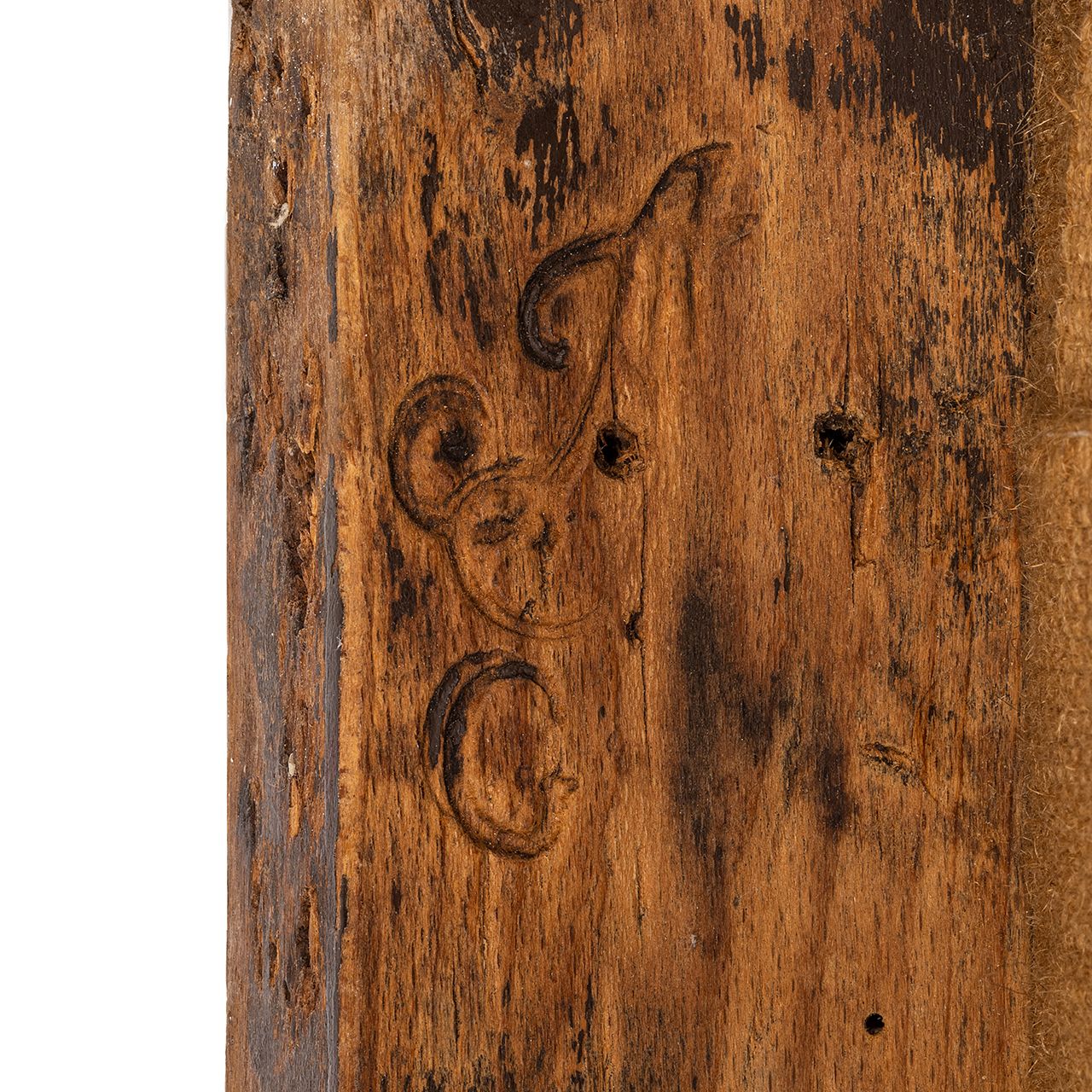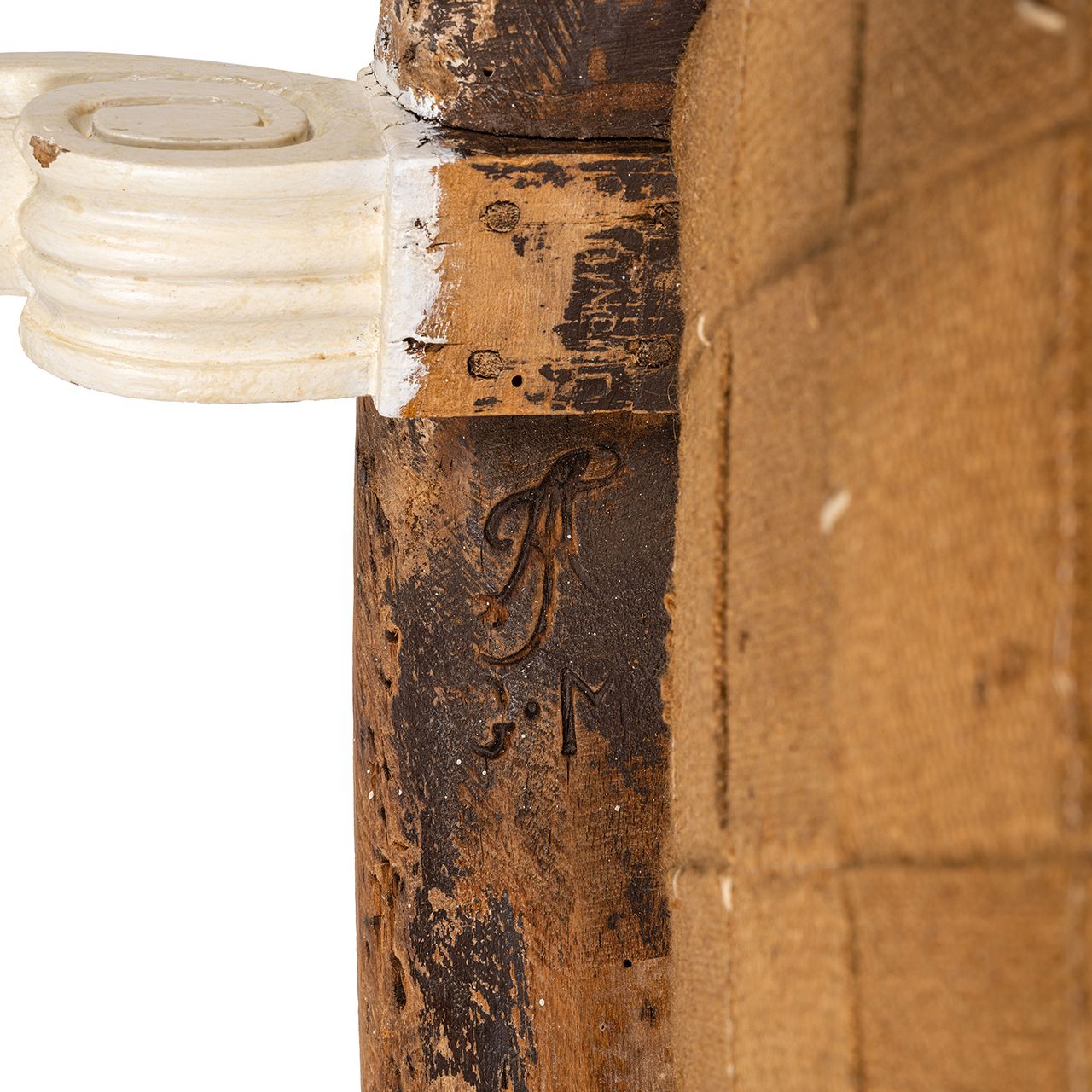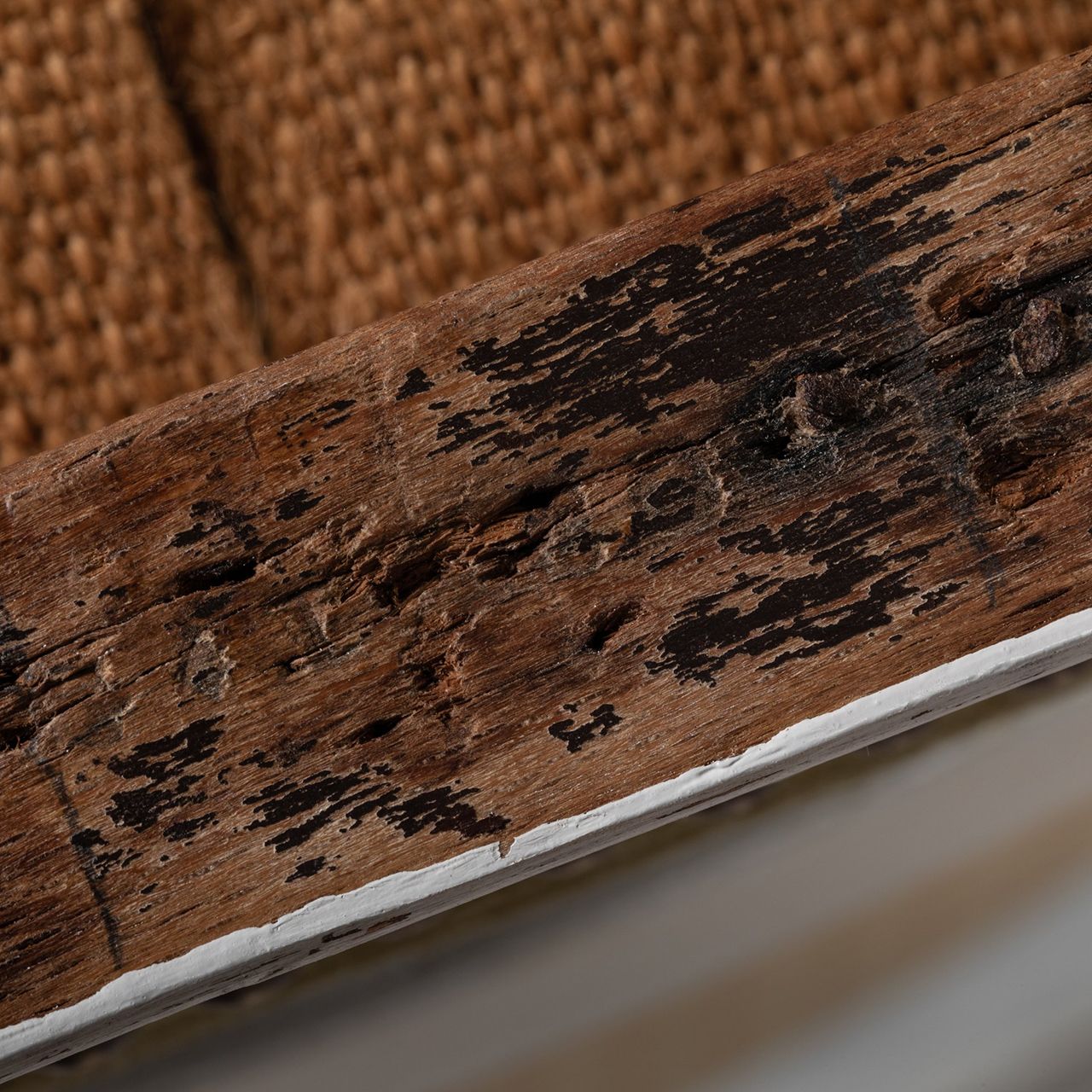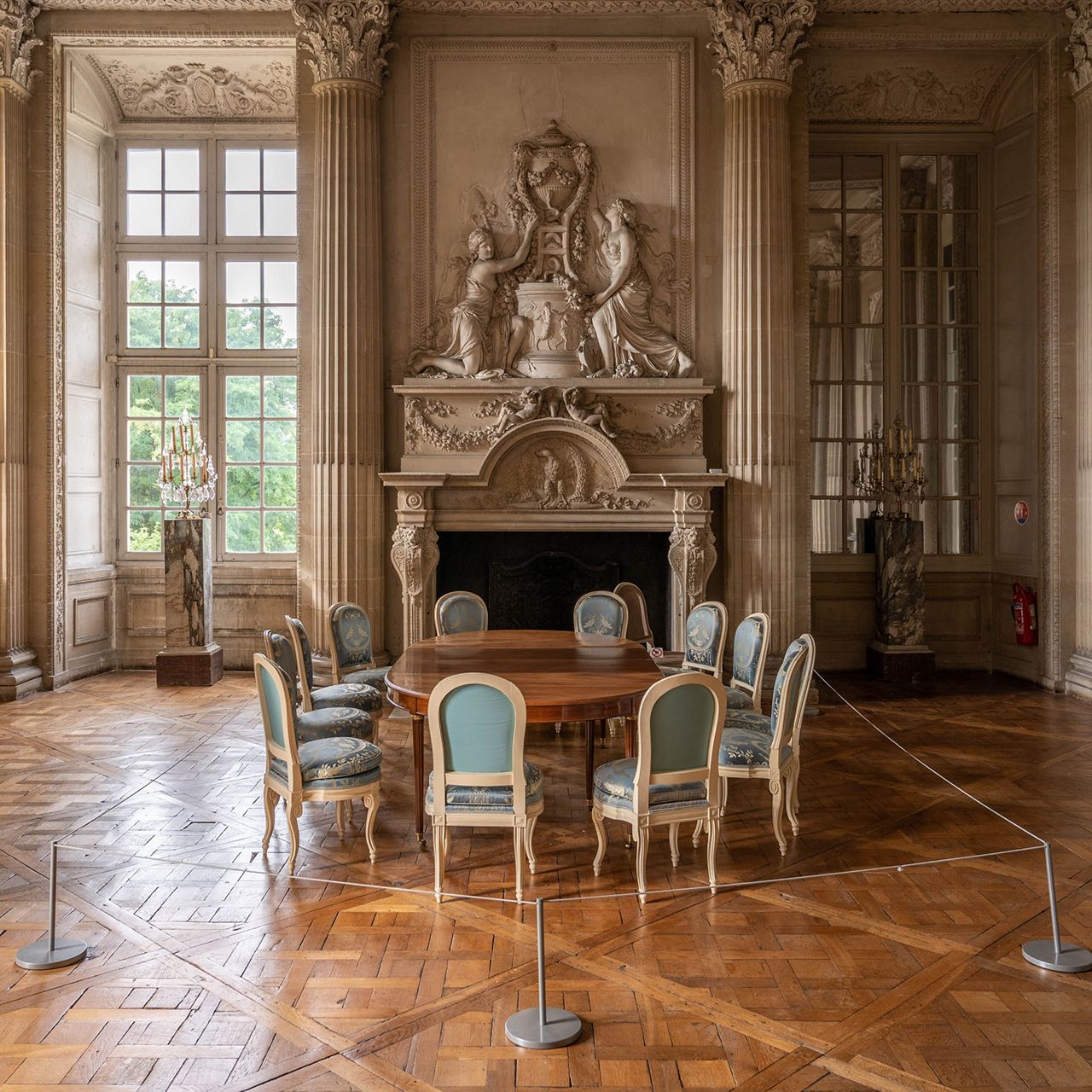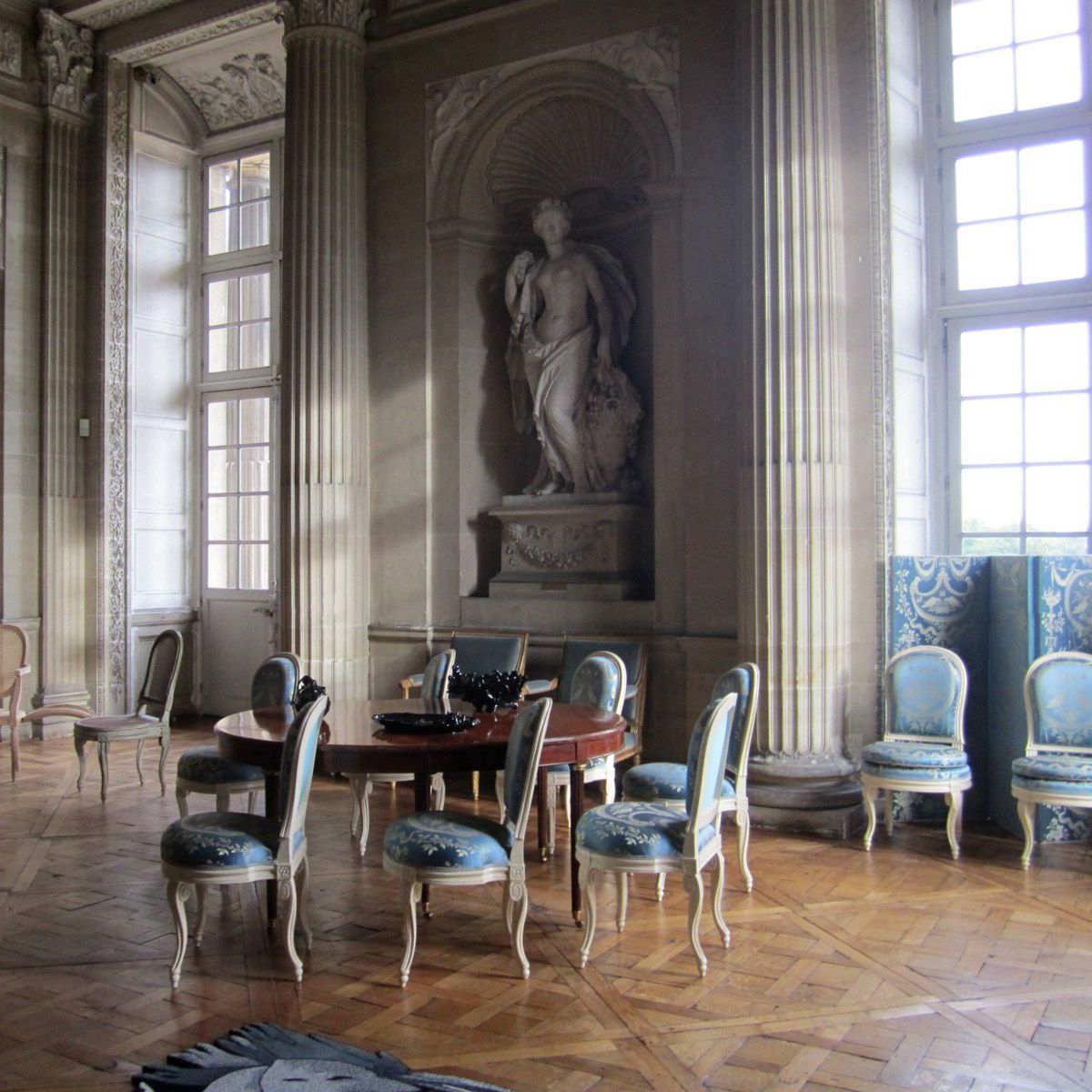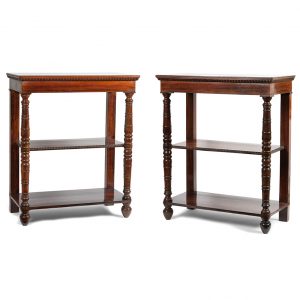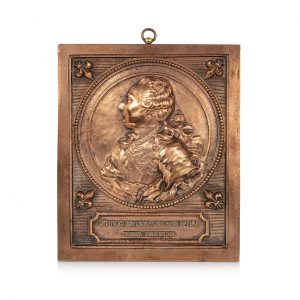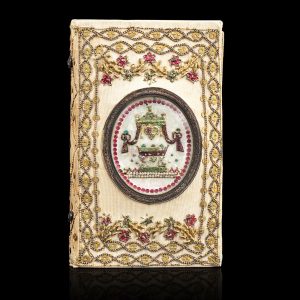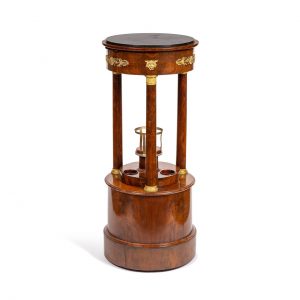In white re-lacquered walnut wood, the armchairs with round seats resting on arched legs in a fluted console, the armrests with cuffs resting on scroll consoles. The chairs have so-called “horseshoe” seats and backs.
Decoration of rosettes in the connection dice. Green velvet trim.
Bear the iron marks of the Garde-Meuble of the Comte d'Artois ("AT / GM").
Traces of old labels.
Traces of stamp "G. IACOB" of Georges JACOB (1739-1814), received master in Paris on September 4, 1765.
Louis XVI period, circa 1777.
Chairs: H. 91.5 x W. 49.5 x D. 48 cm.
Armchairs: H. 91 x W. 60 x D. 52 cm.
- Charles-Philippe of France (1757-1836), Comte d'Artois, brother of King Louis XVI, at the Château de Maisons (Maisons-Laffitte).
- French private collection.
Delivered by Georges Jacob for the dining room of the Comte d'Artois at the Château de Maisons between 1777 and 1779, this set testifies to the iconic model of the master cabinetmaker, namely the fluted console foot, which he seems to have created at the beginning of the reign of Louis XVI.
The year 1777 was rich in acquisitions for the Comte d'Artois, who bought, among other things, the Château de Maisons. He undertook many works there which he entrusted to his favorite architect, François-Joseph Bélanger, who notably created a dining room, with a coffered ceiling and ornaments, still in place at the castle. Remember that the dining room is a brand new creation, at the end of the 18th century, responding to the Anglomania spread by the Duke of Chartres (Philippe Egalité) and the Count of Artois.
To complete the furniture in place, the Comte d'Artois ordered from G. Jacob, through Pierre-Thomas Jubault, a set of furniture brought up to date compared to that in place. Although elegant, of high quality and coming from the best workshops, the furniture of Maisons is however quite sober, far from the luxury of the other residences of the Prince, such as Versailles, the Temple or Bagatelle. That of Maisons testifies to a simpler comfort, meaning that the castle was intended above all for informal receptions for the Prince's entourage and for hunting. It should be remembered that the purchase of Houses had been motivated by the Prince's desire to bring it together in Saint-Germain to have a large hunting territory.
Among this furniture, there is trace of an order for 30 chairs, divided between the living room, the billiard room and the dining room, and 12 caned chairs, one of which is on display at the château (Mémoires de G. Jacob pour le service of the Count of Artois, 1777, Arch. Nat., R 1315).
Our two chairs correspond to the model described in the order from G. Jacob in 1777, thirty chairs for the living room and the dining room "in walnut wood, curved in plan and elevation, the backs curved and hollowed out inside, adorned with double profiles of moldings, consoled feet, rosettes in all the boxes, at 24 pounds each".
We also learn that they were trimmed with horsehair and covered with blue damask, with designs of birds' nests, adorned with crests of blue and white silk. We also know that the woods were painted in oils and varnished, as the memory of Sieur Plou, painter for the service of the Garde-Meuble of Mgr. the Comte d'Artois at the Château de Maisons (Arch. Nat., R 1314): "thirty wooden chairs painted in oil and varnish: 3 livres/piece".
In 1778 and 1779, Jacob supplied other seats, including "10 armchairs à la reine made in the antique style of a new shape decorated and profiled with double mouldings, the boat-shaped armrests adjusted and notched in the uprights together, ornamental leaves on the face of the consoles, an astragal above with triglyphs, turned sheath and fluted legs, rosettes in the boxes", an bergère, 2 chairs and 6 cabriolet chairs, all matching the ten armchairs.
Our seats were, like many others, stripped by the vagaries of time, to respond to the fashion for natural wood, then re-lacquered in white identical to the time of the Comte d'Artois. On in-depth examination of the crosspieces, however, there are still traces of the old lacquer and above all, marks of old labels, which unfortunately disappeared when the old lacquer was stripped. We know indeed that Jacob used to stick a label on which was marked in ink the name of the recipient and the assignment of the seat in the places.
The only tangible information is the iron marks of the Comte d'Artois, cursive letters AT for ArTois, and GM in block letters for Garde-Meuble.
The fate of these seats then falls under the revolutionary decrees of 1792 concerning the property of emigrants, involving the emptying of the castles of their contents, for sale. Thus, the announcement of the sale of the furniture of Maisons took place on November 25, 1792 but will in fact only take place during 1793. The inventory ordered on May 8, 1792 by Monsieur Ragaiez, manager of the castle, proves that all the furniture is still in place on this date, noting that eighteen of the thirty blue damask chairs passed through the Salon, the current Salon des Capéfi. We then completely lose track of these seats, until the reappearance of a chair in the collection of Mr Eugène Becker. It was purchased by the Société des Amis du Château de Maisons on August 5, 1991. On June 18, 1999, twelve other chairs were purchased for the château at a Sotheby's Monaco sale, lot no. 127. The armchairs are completely new and have not appeared on the art market since the revolutionary sales.
- French National Archives, R 1314 and 1315.
- "Les cahiers de Maisons", Société des Amis du château de Maisons, n°21, summer 1992, "La chaise cannée de Georges Jacob" by Pascal Dauphin.
- "Les cahiers de Maisons", Société des Amis du château de Maisons, n°23, summer 1994, "À propos du mobilier du Comte d'Artois au château de Maisons", by Pascal Dauphin.
- "Les cahiers de Maisons", Société des Amis du château de Maisons, n°29 December 2000, "Acquisitions de 12 chaises Jacob créées pour le Comte d'Artois".
- Bulletin n°7 de la Société des Amis du château de Maisons, 15.11.2012, p. 35 and following (Philippe Chartier).
- "Le château de Maisons", éd. du Patrimoine, Centre des Monuments Nationnaux, 2020.


